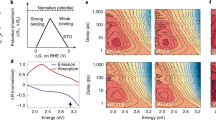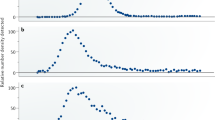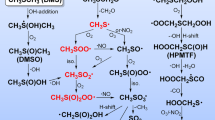Abstract
WE have measured the rate constant for the reaction O− + O2 → O3− by irradiating a solution of aerated 10−1 N potassium hydroxide with a short pulse of fast electrons and observing directly the growth of the transient species O3− which has an absorption maximum at 4300 Å (refs. 1 and 2).
This is a preview of subscription content, access via your institution
Access options
Subscribe to this journal
Receive 51 print issues and online access
$199.00 per year
only $3.90 per issue
Buy this article
- Purchase on Springer Link
- Instant access to full article PDF
Prices may be subject to local taxes which are calculated during checkout
Similar content being viewed by others
References
Boag, J. W., and Adams, G. E., Symp. Cellular Radiation Biology, M.D. Anderson Hospital, Houston, Texas (1964).
Czapski, G., and Dorfman, L. M., J. Phys. Chem., 68, 1169 (1964).
Hart, E. J., and Boag, J. W., J. Amer. Chem. Soc., 84, 4090 (1962).
Author information
Authors and Affiliations
Rights and permissions
About this article
Cite this article
ADAMS, G., BOAG, J. & MICHAEL, B. Rate Constant for the Reaction of O− with Oxygen. Nature 205, 898–899 (1965). https://doi.org/10.1038/205898a0
Issue Date:
DOI: https://doi.org/10.1038/205898a0
Comments
By submitting a comment you agree to abide by our Terms and Community Guidelines. If you find something abusive or that does not comply with our terms or guidelines please flag it as inappropriate.



